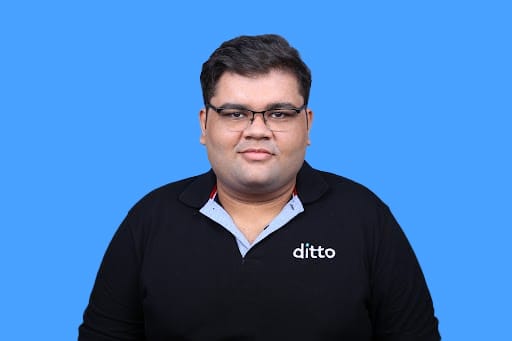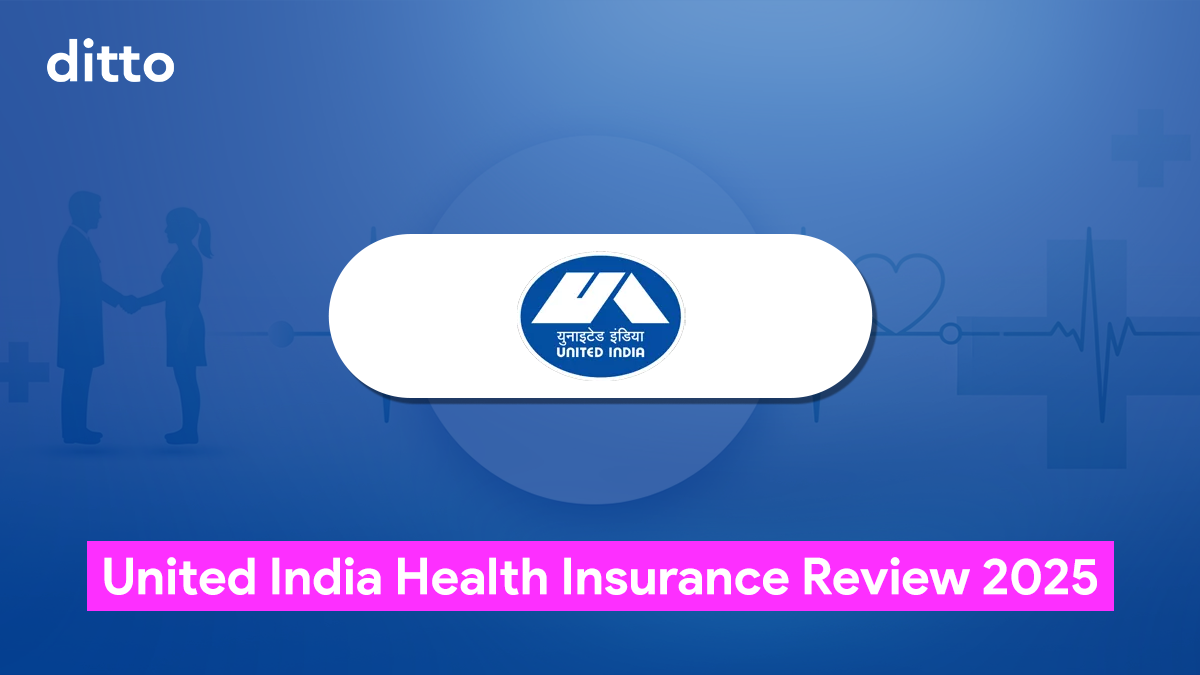If you’re considering United India Health Insurance for your health cover, this review will help you make an informed decision. United India Insurance Company Limited (UIICL), one of India’s oldest insurers, founded in 1938, is currently the fourth-largest public sector general insurer. While it has a strong legacy and a broad product portfolio, the company faces some critical challenges in 2025—most notably a CRISIL downgrade to “AA-” and a solvency ratio of –0.65, far below the regulatory requirement of 1.50.
Although it posted a ₹154 crore profit in FY 2024–25 after years of losses, these financial pressures cannot be overlooked. The Finance Minister has also urged PSU insurers, including United India, to step up digital transformation and customer service to stay competitive. In this review, we’ll break down its claim performance, financial health, hospital network, plan features, and pricing, and share our expert perspective on whether it’s the right fit for you.
United India Health Insurance Metrics
When evaluating United India Insurance in the health insurance space, the past three years paint a mixed picture:
1) Claim Settlement Ratio (CSR):
United India Health Insurance has maintained a reasonably high CSR, averaging 94% between 2021–24. This means that on average, 94 out of every 100 claims were successfully paid out. While slightly below some top private insurers, such as HDFC & Aditya Birla, it still reflects a fairly reliable claims record.
- 2021–22: 98%
- 2022–23: 93%
- 2023–24: 93%
2) Incurred Claim Ratio (ICR):
The ICR has shown volatility, averaging 106% over 2021–24. Since an ICR above 100% means the insurer paid out more in claims than it earned in premiums, this indicates some financial strain and potential mispricing in its plan, which could lead to price hikes for its customers.
- 2021–22: 120%
- 2022–23: 90%
- 2023–24: 109%
3) Complaints Volume:
United India Health Insurance handles a moderate complaint load, with an average of 8 complaints per 10,000 claims settled between 2022-2024.
- 2021–22: 5
- 2022–23: 9
- 2023–24: 9
Note: This is the overall complaint volume for all the products of the general insurer, not specific to health insurance.
4) Network Hospitals:
The United India Health Insurance Hospital List extends to over 4,000 hospitals nationwide. While this ensures basic coverage in and around metro cities, the network is relatively limited compared to private players that often offer 8,000–12,000+ hospitals.
5) Solvency Ratio:
As per Form NL-26 filed by United India Insurance Company Ltd., the company reported a solvency ratio of –0.65 as of March 31, 2025. This implies that United India has not only failed to meet the regulatory minimum solvency ratio of 1.50 but also has a negative capital buffer (meaning its liabilities exceed its available assets or surplus, leaving no cushion to absorb financial shocks), raising serious concerns about its ability to meet future claim obligations without external capital support.
To put it into perspective, suppose an insurance company is required to keep ₹100 in reserve to meet future claims.
A solvency ratio of 1.50 means that for every ₹100 of liabilities, the insurer holds ₹150 in assets – which is a strong position. Now, if the solvency ratio is -0.65, it means the opposite: for every ₹100 they owe, they don’t just have zero reserves – they are short by ₹65. In other words, their assets are ₹65 less than what they need to cover ₹100 of liabilities.
This reflects a severe capital shortfall, indicating the company owes more than it owns and may need urgent recapitalization to continue functioning within regulatory norms.
Ditto’s Verdict:
From Ditto’s perspective, United India Health Insurance has a commendable claims track record, but the company is grappling with financial sustainability challenges and a relatively limited hospital network when compared with some leading private insurers. While you can generally count on reliable claim servicing, it’s essential to remain aware of the narrower cashless network and ongoing solvency concerns.
United India Health Insurance Plans
The flagship United India Insurance Health Insurance plans include:
Family Medicare:
United India’s Family Medicare is a mid-tier health insurance plan that covers hospitalization, day care procedures, and AYUSH treatments, while offering benefits like no co-payment, a 100% restoration of sum insured for different ailments only once a year, short pre- and post-hospitalization cover (30 and 60 days respectively, and only upto 10% of sum insured), and a measly bonus for claim-free years (up to 200% of sum insured).
However, it comes with notable limitations such as disease-specific sub-limits (Cataract capped at ₹50,000 per eye or 10% of SI, whichever is lower, mental illnesses capped at 25% of SI, with a maximum of ₹3,00,000 per year), a 3-year waiting period for pre-existing diseases with no add-on to reduce it, no domiciliary hospitalization cover, and only periodic health checkups (once in 3 years). Overall, it’s an adequate option for basic coverage, but those seeking more comprehensive benefits may find better alternatives.
| Health Insurance Plan | Metrics (Average of data from the last three available years) | Available Riders |
|---|---|---|
| HDFC ERGO Optima Secure | CSR: 97.5% ICR: 85.2% Complaint Volume: 7 per 10K claims Network Hospitals: 12,500 |
Unlimited Restoration, Hospital Cash Benefit, Optima Well-being (OPD) |
| Care Supreme | CSR: 90% ICR: 58% Complaint Volume: 36 per 10K claims Network Hospitals: 11400 |
Air Ambulance, Wellness Benefit, Cumulative Bonus Super, Cumulative Bonus Booster, Annual Health Checkup, Instant Cover. Instant Cover Plus, Claim Shield, Reduction in PED, OPD Care, Be-Fit Benefit, Unlimited Care |
| Aditya Birla Activ One Max | CSR: 95% ICR: 61.4% Complaint Volume: 22 per 10K claims Network Hospitals: 12000 |
Chronic Management Program (OPD), Chronic Care, Reduction in PED waiting period. |
| United India Family Medicare | CSR: 94% ICR: 106% Network Hospitals: 4000+ Complaints Volume: 8 per 10,000 claims settled |
Hospital Cash, Maternity |
| United India Individual Platinum Plan | CSR: 94% ICR: 106% Network Hospitals: 4000+ Complaints Volume: 8 per 10,000 claims settled |
Hospital Cash |
United India’s plans show a decent claim settlement ratio (94%) and relatively low complaint volume, but the high incurred claims ratio (106%) signals financial strain. Additionally, their hospital network is significantly smaller (4,000+) compared to private insurers, limiting cashless access.
| Health Insurance Plan | 1st Year Premiums for a 25-year-old for a 15 lakh cover | 1st Year Premiums for a couple for a 15 lakh cover (One person is 32 and the other is 30) | 1st Year Premiums for a family of three for a 15 lakh cover (one person is 35, the other is 32, and the child is 4) | 1st Year Premiums for a couple for a 15 lakh cover (one person is 65, the other is 62) |
|---|---|---|---|---|
| HDFC ERGO Optima Secure | ₹16,673.75 (necessary add-ons have been added) | ₹26,179.45 (necessary add-ons have been added) |
₹31,843.47 (necessary add-ons have been added) |
₹1,05,571.32 (necessary add-ons have been added) |
| Care Supreme | ₹17,218.16 (necessary add-ons have been added) | ₹24,535.31 (necessary add-ons have been added) |
₹30,939.99 (necessary add-ons have been added) |
₹89,810.39 (necessary add-ons have been added) |
| Aditya Birla Activ One Max | ₹11,975.82 | ₹19,232.82 | ₹25,344.04 | ₹78,475.90 |
| United India Family Medicare | ₹12,057.2 | ₹22104.6 | ₹29473.2 | ₹114264.1 |
United India’s premiums are competitive for younger customers and families, sitting close to Aditya Birla and significantly lower than HDFC ERGO and Care in the early age brackets. However, for senior citizens, its premium shoots up sharply to ₹1.14 lakh, making it the most expensive among the listed options for older age groups.
Individual plan:
United India Health Insurance’s Individual Platinum Plan stands out with no waiting period for pre-existing diseases and no disease-wise sub-limits, making it a rare offering among health insurance policies. It also covers daycare treatments, domiciliary hospitalization, AYUSH therapies, and pre- & post-hospitalization expenses(30 and 60 days respectively, and only up to 10% of sum insured). However, major drawbacks include strict room rent restrictions, no restoration benefit, and no bonus for claim-free years.
Medicare Super Top Up:
United India’s Medicare Super Top-up is designed to give a financial cushion over your base health policy, with coverage of up to ₹75 lakhs. It comes with perks like no co-payment, no room rent restrictions, coverage for day care and AYUSH treatments, and pre- & post-hospitalization expenses (30 and 60 days, respectively). However, it has drawbacks, including disease-wise sub-limits on modern treatments, no domiciliary cover, and no extras like restoration benefits, health checkups, or claim-free bonuses. Overall, it’s a decent buffer plan for high medical costs, though private insurers may offer more generous caps, features, and smoother claim settlement.
Ditto’s Take on “United India Health Insurance” as an Insurer
If you’re evaluating United India Health Insurance for your health cover, it may not be the most competitive option for most people. There are other insurers, both private and public, that currently offer stronger financial stability, better solvency ratios, and more flexible plan features.
That said, United India can still be considered in specific situations, such as when private insurers decline your proposal or if you prefer a PSU insurer for trust and long-standing presence. However, for broader benefits and innovation, exploring alternatives might be worthwhile.
Here’s why:
- Their online portal makes policy purchase, servicing, and renewals a tad bit difficult. The website requires logging in to their “Customer Portal” even to get a premium quote or access the proposal form. We had to calculate premiums for their Family Medicare plan using the policy wording, as we couldn’t obtain it directly from their website.
- United India Health Insurance, like other public sector insurers, relies on TPAs to manage claims for both group and retail policies. While using TPAs is standard industry practice, insurers with in-house claim teams often provide faster resolution. For retail customers, TPA dependency can sometimes add extra steps, potentially impacting speed and convenience compared to direct settlement.
- Most of their policies lack critical features, such as a restoration benefit, and impose limitations, including disease-specific sub-limits and strict room rent caps.
- Premiums are on the higher side for the profiles we selected, despite offering fewer benefits compared to leading competitors.
Why Approach Ditto for Your Insurance Policy?
At Ditto, we’ve assisted over 7,00,000 customers with choosing the right insurance policy. Why customers like Ajay below love us:

✅ Honest advice – no commission-driven recommendations
✅ 12,000+ 5-star reviews (Rated 4.9 on Google)
✅ Real claim experience – we've helped customers through actual claims
✅ Trusted by Zerodha and other leading fintech companies
Conclusion
While United India Health Insurance has a long legacy and a decent claims record, its limitations, higher premiums, and operational inefficiencies make it a less appealing choice compared to stronger private and public alternatives. You may want to consider a more competitive insurer with broader benefits and smoother claim servicing.
Last updated on:










